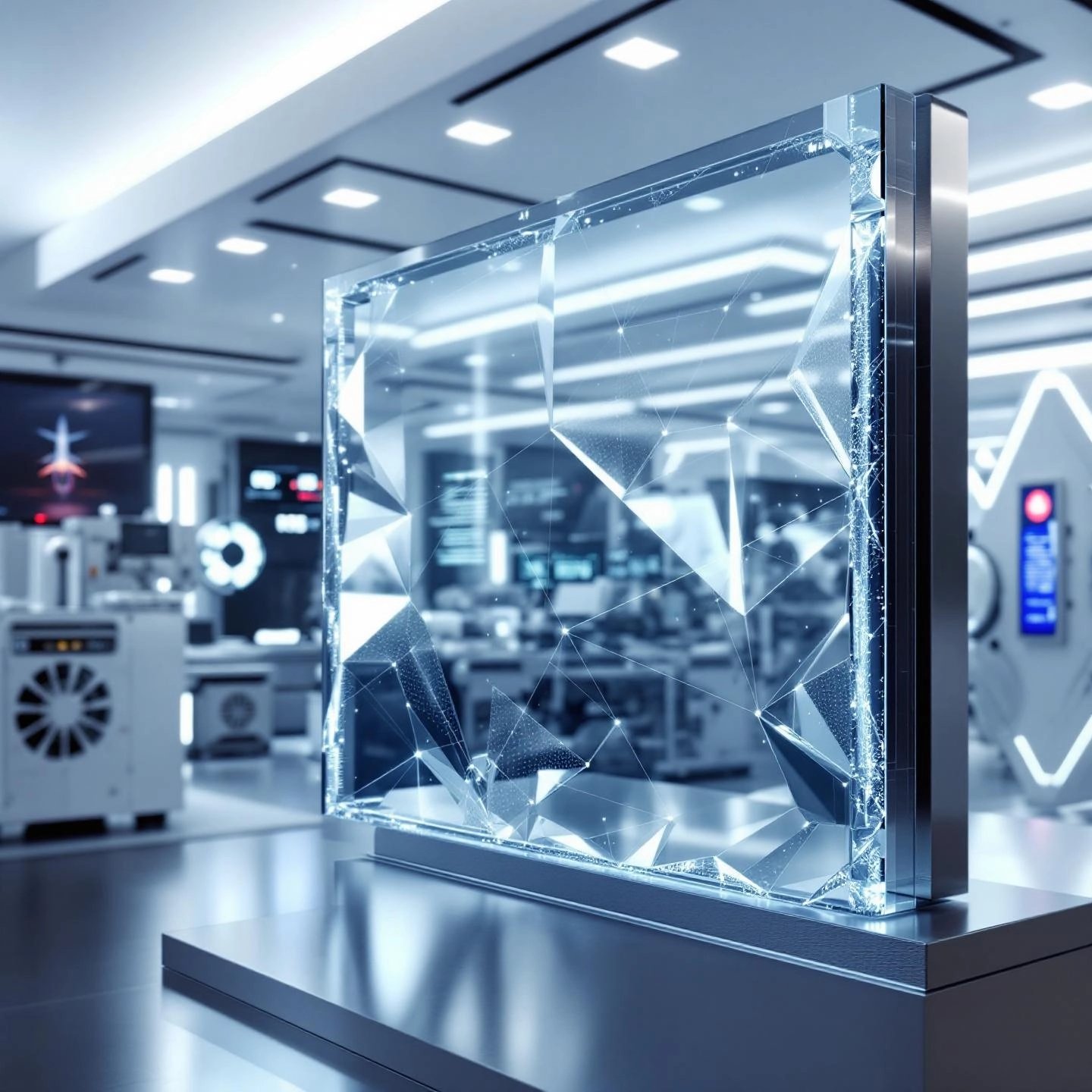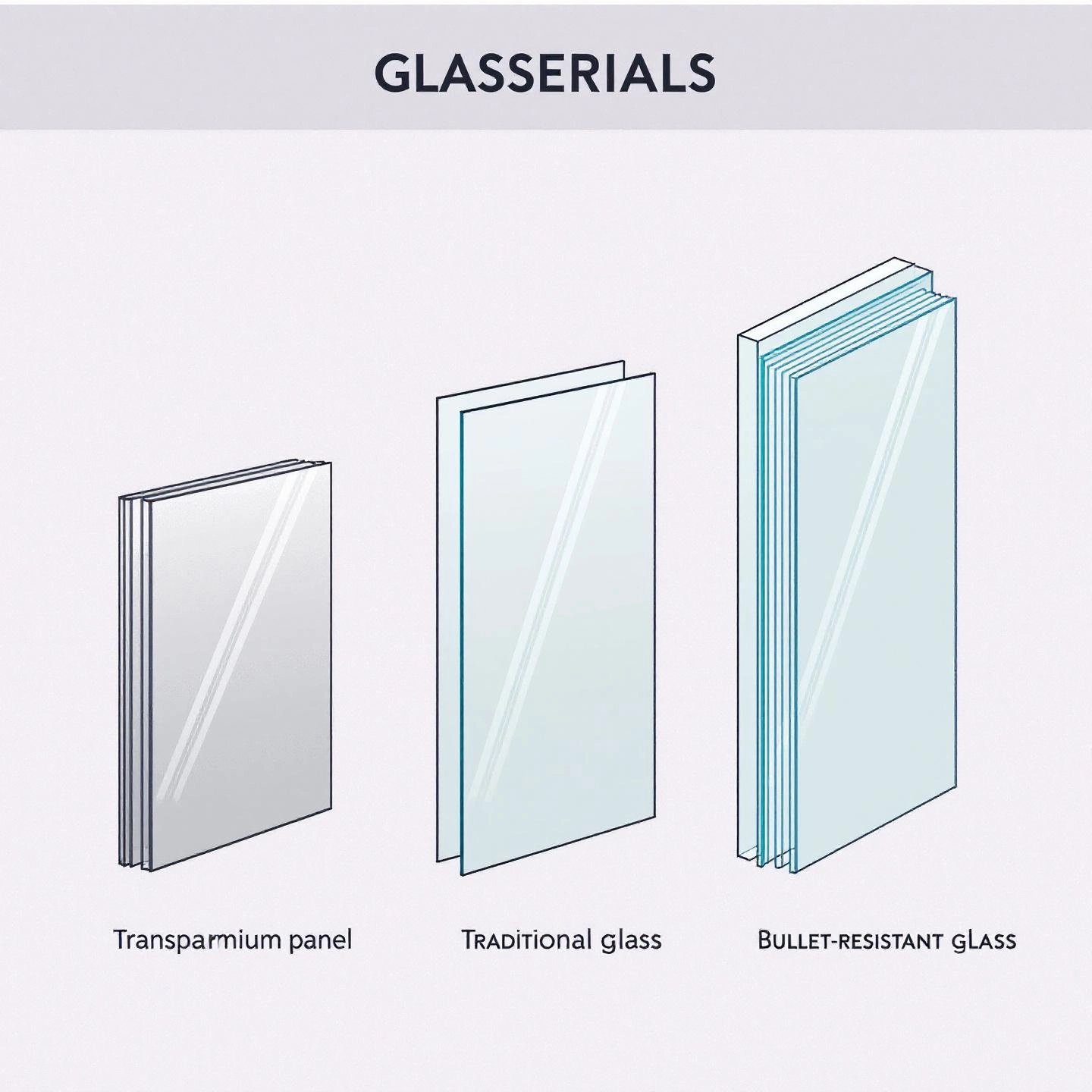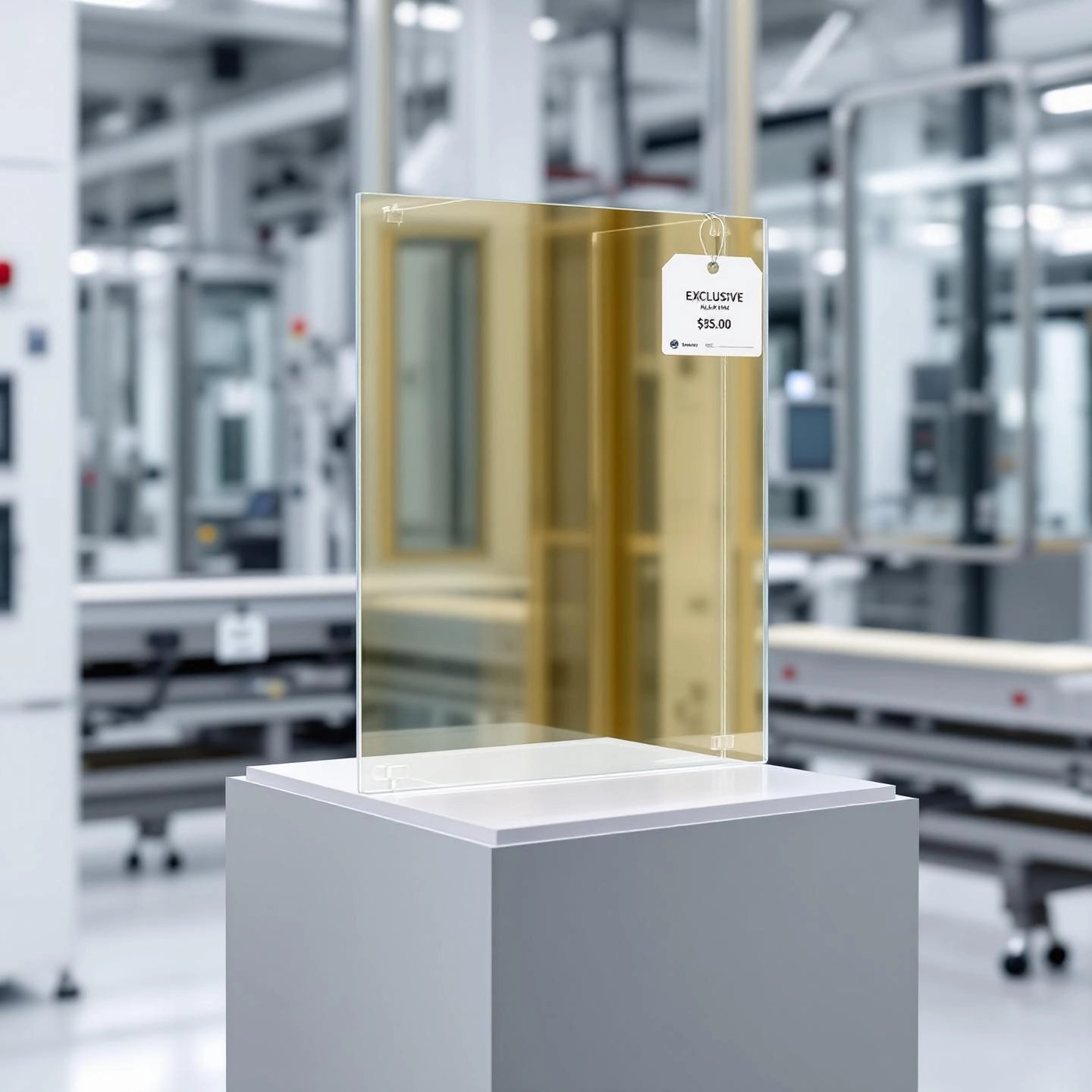
Have you ever wondered if the futuristic materials in your favorite sci-fi movies could ever become real? One of the most iconic examples is transparent aluminum—a material introduced to the world in a memorable scene from Star Trek IV: The Voyage Home. In that film, the crew barters the secret formula for this seemingly impossible substance, captivating audiences with the idea of a metal as clear as glass yet strong enough to withstand the harshest conditions. But what is transparent aluminum, and does it actually exist outside the realm of science fiction?
Surprisingly, the answer is yes—but with a twist. While the name suggests a see-through metal, today’s transparent aluminum isn’t a metal at all. Instead, it’s a cutting-edge ceramic known scientifically as aluminum oxynitride (often abbreviated as ALON). This advanced material is made from a combination of aluminum, oxygen, and nitrogen, resulting in a polycrystalline ceramic that is both optically transparent and exceptionally strong. Unlike traditional aluminum, which is opaque and metallic, this version achieves its clarity and toughness through a unique crystal structure and sophisticated processing techniques.
So, why all the excitement? Imagine a material that can stop bullets, withstand extreme temperatures, and remain clear across a wide range of light wavelengths. That’s the promise of transparent aluminum. It’s already making waves in industries like defense and aerospace, where its unique properties are opening doors to new possibilities.
In this ultimate guide, you’ll discover how transparent aluminum made the leap from the big screen to real-world laboratories. We’ll explore its fascinating development, remarkable properties, cutting-edge applications, and the reasons behind its high cost. Whether you’re a Star Trek fan, an engineer, or simply curious about advanced materials, you’re about to embark on a journey through the science, technology, and future of transparent aluminum. Ready to see what’s possible when imagination meets innovation? Let’s dive in.

When you hear the phrase "transparent aluminum," does a scene from a sci-fi movie instantly come to mind? For many, the answer is yes—thanks to one of the most memorable moments in film history: Star Trek IV: The Voyage Home. In this 1986 classic, the crew of the USS Enterprise travels back to 20th-century Earth on a mission to save humpback whales. Faced with the challenge of building a massive, watertight tank to transport the whales to the future, engineer Scotty finds himself in need of an ultra-strong, clear material. But with no money or resources in the past, he offers something even more valuable: the formula for a futuristic substance—transparent aluminum—in exchange for the materials he needs.
Sounds complex? Not really, if you consider the magic of storytelling. The "transparent aluminum Star Trek" moment is more than just a clever plot device; it’s a cultural touchstone that sparked the imagination of millions. Scotty’s quick thinking and the idea of trading advanced knowledge for a good cause perfectly encapsulate the spirit of Star Trek—where science, ethics, and adventure collide. The notion of a window material that’s as tough as steel but crystal clear was so compelling that it left viewers asking, “Could this ever be real?”
After its debut, the concept of transparent aluminum quickly took on a life of its own. Fans and scientists alike latched onto the idea, turning it into a recurring reference point for futuristic materials in movies and beyond. You’ll notice that "transparent aluminum in movies" has become shorthand for any material that seems almost too advanced to exist—yet tantalizingly close to reality. This single scene did more than just solve a plot problem; it seeded a question in the public consciousness: What if our wildest sci-fi inventions could someday be real?
And it’s not just Star Trek. The franchise is known for predicting or inspiring real-world technologies—from communicators that resemble modern flip phones to stun weapons that predate tasers. Transparent aluminum stands out as a symbol of that unique intersection between fiction and future innovation.
Curious how this sci-fi dream became a scientific reality? In the next section, we’ll separate fact from fiction and reveal how material science turned a movie fantasy into a breakthrough technology.
When you first hear the term "transparent aluminum," you might ask: Is transparent aluminum real? Or maybe, does transparent aluminum exist? These questions are among the most common—and most misunderstood—when it comes to this futuristic material. Let’s break down the science behind the legend and clear up the confusion once and for all.
Imagine holding a piece of regular aluminum in your hand. No matter how thin you slice it, you’ll never see through it. But why? The answer lies in the fundamental nature of metals. Metals like aluminum are packed with free electrons—tiny, negatively charged particles that move easily throughout the material. When light hits a metal surface, these free electrons absorb and re-emit the energy, scattering the light and making the metal appear shiny and completely opaque. This property is what gives metals their characteristic luster but also prevents them from being transparent (Bean Thinking).
So, does transparent aluminum exist? The answer is yes—but with a twist. What we call "transparent aluminum" is not a transparent metal, but rather a special type of advanced ceramic made from aluminum compounds. The two leading candidates are aluminum oxynitride and magnesium aluminate spinel. These materials are created by combining aluminum with other elements (like oxygen and nitrogen) and then processing them at high temperatures and pressures. The result is a crystalline ceramic that is both clear and incredibly strong.
Because these ceramics lack the free electrons found in metals, they don’t scatter light in the same way. Instead, their carefully engineered crystal structures allow visible light to pass through, resulting in a material that is both transparent and tough—something regular aluminum could never achieve.
If you’ve ever imagined a window made from pure, see-through aluminum metal, it’s time to adjust that vision. The term "transparent aluminum"—while catchy and rooted in pop culture—is a bit misleading. In reality, the material is a transparent ceramic derived from aluminum compounds, not the shiny metal you might find in soda cans or airplane parts (Ceramic Tech Today).
Understanding this distinction is crucial. While the science fiction dream was a see-through metal, the real breakthrough is even more fascinating—a ceramic that combines clarity with exceptional strength. In the next section, we’ll dive deeper into the chemistry and structure behind this remarkable material, showing how it bridges the gap between imagination and reality.
-ceramic-block-highlighting-its-unique-crystal-structure.jpg)
Ever wondered what actually makes “transparent aluminum” possible? The answer lies in a remarkable material called aluminum oxynitride—or ALON for short. Let’s break down the science behind this advanced ceramic and see why it stands at the heart of the real-world transparent aluminum story.
Picture a material that looks like glass but is far tougher and more versatile. ALON is a transparent polycrystalline ceramic composed of aluminum (Al), oxygen (O), and nitrogen (N). Its chemical formula is typically represented as Al23O27N5, though the precise ratios may vary slightly depending on manufacturing conditions (AZoM). Unlike metallic aluminum, ALON is produced by combining these elements at high temperatures to form a solid, crystalline structure.
Sounds complex? Here’s the simple version: ALON’s unique cubic spinel structure is the secret to its transparency and strength. In this arrangement, the atoms are packed in a highly ordered, repeating pattern. This regularity means that as light passes through, it’s not scattered or absorbed the way it would be in a metal or an unstructured ceramic. Instead, the material allows light to travel through with minimal distortion, resulting in a clear, glass-like appearance.
Imagine holding a window made from ALON. You’d notice it looks much like glass, but with a subtle grayish tint. What you can’t see is the microscopic crystal structure that gives it both its clarity and its incredible toughness.
ALON isn’t alone in the world of advanced transparent ceramics. Two related materials often come up in discussions:
What sets ALON apart is its combination of hardness, optical clarity, and the ability to be manufactured in a variety of shapes and sizes using conventional ceramic processing techniques (Wikipedia).
These aluminium oxynitride properties make it a top choice for demanding applications where both strength and clarity are essential.
Now that you know what makes ALON so special, you might be wondering: how do scientists actually create such a remarkable material? In the next section, we’ll explore the sophisticated manufacturing process that transforms raw powders into transparent armor and advanced optical components.
When you think of something as tough and clear as transparent aluminum, you might wonder, “How is transparent aluminum made?” The answer is both fascinating and complex. Unlike traditional glass or metals, creating this advanced material—scientifically known as aluminum oxynitride (ALON)—involves a multi-stage, energy-intensive process that requires precision at every step. Let’s break down the transparent aluminum manufacturing process so you can see why it’s so unique—and why it comes with a hefty price tag.
Imagine starting with a fine, white powder and ending up with a crystal-clear, armor-strong window. Here’s how it happens:
Sounds involved? It is—and that’s why transparent aluminum is much more expensive than standard glass or plastics. Here’s why the process is so costly and specialized:
Because of this complex and resource-intensive process, transparent aluminum is reserved for applications where its unique combination of strength and clarity is absolutely essential. You’ll find it in places where traditional materials simply can’t compete.
Now that you know the journey from powder to polished pane, you might be wondering: which real-world materials actually deliver on the promise of transparent aluminum? In the next section, we’ll introduce ALON—the leading commercial example—and explore how it’s changing the landscape of advanced materials.
When you picture the phrase "transparent aluminum" in action, what comes to mind? For scientists, engineers, and defense experts, one material stands out above all others: ALON transparent aluminum. But what exactly is ALON, and why has it become the gold standard for high-performance, transparent ceramics?
ALON, short for aluminum oxynitride, wasn’t born overnight. Its story stretches back to the late 1950s, when researchers first identified the ALON phase as a promising ceramic for optical and structural applications. However, it wasn’t until the 1970s and 1980s that the material truly began to take shape. Pioneering work by scientists at the Army Materials and Mechanics Research Center laid the groundwork for understanding ALON’s unique cubic spinel structure—a crystal arrangement that unlocks both transparency and mechanical strength (SPIE Digital Library).
By the 1990s, ALON’s potential for use in transparent armor and advanced optics had caught the attention of major defense contractors. Technology transfers and commercial partnerships, including with Raytheon and later Surmet Corporation, propelled ALON from laboratory curiosity to a qualified material for missile domes, bullet-resistant windows, and more. Continuous refinement in processing—especially in powder synthesis, high-temperature sintering, and precision polishing—has made ALON the benchmark for transparent ceramics in demanding environments.
So, why is ALON so often referenced when discussing transparent aluminum? It’s all about performance and versatility:
These qualities have made ALON the go-to solution for industries where both protection and visibility are critical, such as defense, aerospace, and advanced manufacturing.
ALON’s success is not just a testament to ceramic science—it’s also a showcase for the precision and innovation found in today’s advanced aluminum manufacturing sector. Producing ALON requires meticulous control of raw materials, high-energy furnaces, and state-of-the-art finishing equipment. Companies that excel in these areas, like Shengxin Aluminum, are redefining what’s possible with aluminum and its related compounds.
Imagine the synergy: companies like Shengxin Aluminum, with their expertise in large-scale extrusion, high-precision machining, and integrated quality control, are paving the way for next-generation materials to enter mainstream industrial use. Their commitment to excellence ensures that breakthroughs like ALON transparent aluminum move from the lab to real-world applications—fueling progress across sectors that demand both strength and clarity.
As we continue, you’ll discover how ALON’s superior properties compare to other transparent materials and why it’s setting new standards for safety, performance, and innovation in the world of advanced materials.

When you hear about a material that’s as clear as glass but tougher than steel, it sounds almost too good to be true. But that’s exactly what makes transparent aluminum—specifically, aluminum oxynitride (ALON)—so remarkable. So, how strong is transparent aluminum? Let’s break down the properties that set it apart from everyday materials and see how it stacks up against the competition.
Imagine you’re designing a window for a spacecraft, a bank, or even a next-generation smartphone. You need something that’s not only see-through but also incredibly tough. This is where transparent aluminum properties truly shine. ALON brings together three critical qualities:
To really understand what makes transparent aluminum special, let’s compare it to two other common materials: bullet-resistant glass (laminated glass) and fused silica (a type of high-strength glass used in optics and electronics). The table below highlights the core differences:
| Property | ALON (Aluminum Oxynitride) | Bullet-Resistant Glass | Fused Silica Glass |
|---|---|---|---|
| Transparency | 80%+ (visible & IR, 2 mm thick) | 85-90% (visible, thicker panels reduce clarity) | 92% (visible, excellent optical clarity) |
| Hardness (Vickers) |
1800–2100 HV (4x harder than fused silica) |
~500–600 HV (laminated layers, much softer) |
500 HV |
| Impact Resistance | Stops .50 cal AP round at 1.6" thickness | Requires 3.7" to stop same round | Low (shatters under impact) |
| Thermal Stability | Up to 1200°C (solid); loses transparency at 2100°C | ~150°C (layers may delaminate) | Up to 1200°C |
| Corrosion/Radiation Resistance | Excellent | Moderate | Good |
| Weight (for same protection) | Lighter (thinner panels provide same protection) | Heavier (requires much greater thickness) | Not suitable for ballistic protection |
Let’s put it simply: if you need a material that’s clear, lightweight, and can take a hit, ALON is in a league of its own. Its superior hardness means it resists scratches and impacts far better than glass, while its optical clarity ensures you don’t sacrifice visibility for strength. For defense, aerospace, and high-tech optics, this combination is a game-changer.
Now that you’ve seen the numbers behind the claims, it’s clear why transparent aluminum is making headlines in material science. Next, let’s explore the real-world applications where these properties truly matter—and how ALON is paving the way for the future of transparent protection and advanced engineering.
Imagine a material that’s lighter than traditional armor, tougher than glass, and clear enough for high-precision optics. That’s the promise of transparent aluminum—and it’s already reshaping how engineers and innovators approach protection, visibility, and performance. So, what is transparent aluminum used for today, and what are the most promising transparent aluminum applications on the horizon?
Transparent aluminum’s unique blend of hardness, optical clarity, and resistance to extreme environments makes it a game-changer in sectors where ordinary materials simply can’t keep up. Here’s a closer look at how ALON and similar ceramics are making a difference:
Sounds futuristic? In many ways, it is. But these breakthroughs wouldn’t be possible without the precision and innovation found in today’s advanced aluminum manufacturing sector. Producing transparent aluminum components demands more than just raw material—it requires deep processing capabilities, from high-temperature sintering to CNC machining and meticulous surface finishing.
That’s where leading manufacturers like Shengxin Aluminum come in. With expertise in extrusion, casting, and deep processing, companies like Shengxin support the high-tech needs of defense, aerospace, and industrial clients worldwide. Their ability to deliver complex, high-performance aluminum profiles ensures that innovations like transparent aluminum can move from research labs to real-world applications—fueling the next generation of safe, efficient, and resilient technology.
As production costs decrease and processing techniques improve, expect to see transparent aluminum expand into even more industries. Imagine consumer electronics with scratch-proof, ultra-clear screens, or public infrastructure protected by lightweight, bullet-resistant windows. Ongoing research in sustainable manufacturing and recycling could also help make transparent aluminum more accessible and environmentally friendly in the future.
In short, the applications for transparent aluminum are only just beginning. Whether you’re designing the next generation of military vehicles or dreaming of smarter, safer cities, this remarkable material is poised to play a starring role. Next, let’s take a closer look at the costs and commercial realities behind this sci-fi-inspired innovation—and why it’s not yet a household name.

Ever thought about building your own bulletproof aquarium or installing ultra-tough windows at home? If so, you might have wondered about the transparent aluminum price or even searched for transparent aluminum for sale. But here’s the reality: while this material is a marvel of modern science, it’s not something you’ll find at your local hardware store—or even in most commercial security projects. Let’s break down why this is the case, and what you need to know about the cost and accessibility of this futuristic material.
Imagine the process: starting with a fine powder, subjecting it to extreme pressures and temperatures, and then meticulously grinding and polishing until you achieve optical-grade clarity. Each step in the manufacturing of aluminum oxynitride (ALON) is both energy-intensive and highly specialized. This complexity drives up the production cost far beyond that of traditional transparent materials like glass or polycarbonate.
Because of these factors, the price of transparent aluminum is significantly higher than alternatives. According to industry sources, commercial ALON panels can cost between $10 and $15 per square inch. That means a single 12" x 12" panel (1 square foot) could range from $1,440 to $2,160 (Riot Glass). For larger or more complex shapes—such as domes or thick armor panels—the cost can climb even higher, sometimes reaching several thousand dollars per piece.
Sounds out of reach? That’s because, for now, it is. Transparent aluminum is not a consumer-grade product. Its high cost and specialized production mean it’s typically reserved for:
For the average business or homeowner, more affordable alternatives—like laminated security glass or polycarbonate panels—are widely used for protection and transparency. These materials offer a balance of performance and price, making them practical for commercial security needs.
Is there hope that transparent aluminum will become more accessible? Possibly. As manufacturing techniques advance, costs may decrease, opening up new applications in consumer electronics, architecture, and beyond. But for now, its price and limited availability keep it firmly in the realm of high-tech, mission-critical projects.
So, if you’re searching for transparent aluminum for sale, be prepared for a hefty price tag and a specialized ordering process. For most, it remains a material to admire from afar—one that fuels innovation at the highest levels of industry and defense. In the final section, we’ll recap the journey of this remarkable material and look ahead to its future in science, technology, and manufacturing.
What began as a science fiction fantasy has now become a powerful symbol of material innovation. Transparent aluminum, once imagined in the world of Star Trek, has evolved into a real-world marvel—one that is pushing the boundaries of what’s possible in science, engineering, and industry. But how did we get here, and what does the future of transparent aluminum hold?
Still, the story doesn’t end here. As research continues, transparent aluminum technology is advancing on several fronts:
None of these advancements would be possible without the expertise and commitment of leading aluminum manufacturers. Companies like Shengxin Aluminum are pivotal in supporting the evolution of high-tech materials. Their deep processing capabilities, large-scale extrusion lines, and dedication to precision engineering ensure that the next generation of transparent aluminum solutions can meet the demands of aerospace, defense, and industrial innovation.
Whether it’s developing custom profiles for transportation or supporting the integration of advanced ceramics in high-performance assemblies, manufacturers like Shengxin Aluminum are not just keeping pace with the future—they’re helping to shape it.
So, what could the future of transparent aluminum look like? Imagine ultra-thin, bulletproof windows in skyscrapers, scratch-proof screens in every device, or lightweight, resilient armor protecting the vehicles of tomorrow. As technology advances and costs decrease, these scenarios move from possibility to probability.
If you’re inspired by the potential of transparent aluminum technology and want to explore how advanced aluminum solutions could transform your next project, now is the perfect time to connect with industry leaders. With the right expertise and a spirit of innovation, the materials of science fiction can become the building blocks of our everyday reality.
Yes, transparent aluminum is real—though it's not a transparent metal. It's an advanced ceramic called aluminum oxynitride (ALON), which combines aluminum, oxygen, and nitrogen in a unique crystal structure. This material is optically clear and extremely strong, making it useful for demanding applications in defense, aerospace, and optics.
The main drawback of transparent aluminum is its high cost. Manufacturing ALON requires specialized equipment, high temperatures, and precision grinding and polishing. These factors result in prices much higher than traditional glass or polycarbonate, limiting its widespread commercial use to specialized sectors like defense and aerospace.
Transparent aluminum (ALON) typically costs between $10 and $15 per square inch. For example, a single square foot panel can range from $1,440 to $2,160, with larger or custom-shaped pieces costing even more. This price reflects the complex, energy-intensive production process required for optical-grade clarity and strength.
Star Trek IV: The Voyage Home famously introduced transparent aluminum as a fictional material. Decades later, science caught up with fiction: ALON and similar ceramics now exist, closely matching the properties imagined in the film. The movie's influence helped inspire real-world research and innovation in advanced materials.
Transparent aluminum is used in bullet-resistant armor, military vehicles, aerospace windows, optical sensors, and high-performance domes. Its combination of clarity, strength, and resistance to extreme environments makes it ideal for security, defense, and advanced industrial applications. Leading manufacturers like Shengxin Aluminum support the development and integration of such advanced materials.
 บริการออนไลน์
บริการออนไลน์ 0086 136 3563 2360
0086 136 3563 2360 sales@sxalu.com
sales@sxalu.com +86 136 3563 2360
+86 136 3563 2360